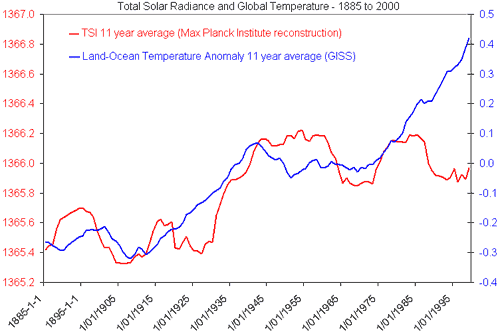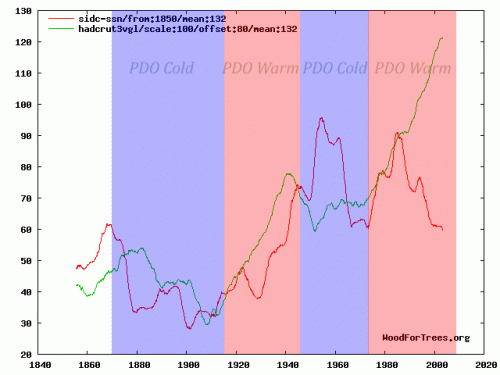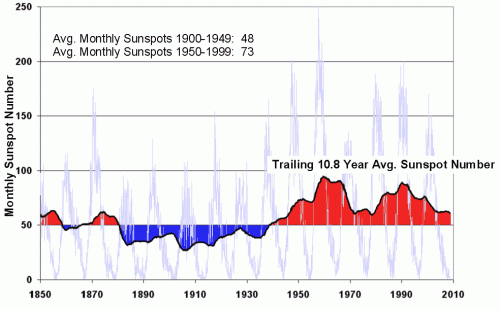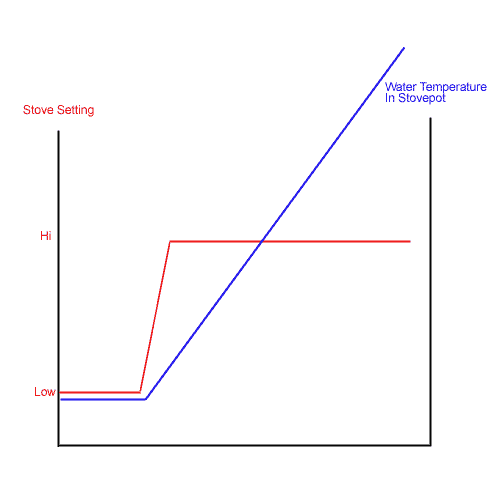Most skeptics have been clubbed over the head with the “settled science” refrain at one time or another. How can you, a layman, think you are right when every scientist says the opposite? And if it is not settled science, how do folks get away unchallenged saying so?
I am often confronted with these questions, so I thought I would print my typical answer. I wrote this in the comments section of a post at the Thin Green Line. Most of the post is a typical ad hominem attack on skeptics, but it includes the usual:
The contrarian theories raise interesting questions about our total understanding of climate processes, but they do not offer convincing arguments against the conventional model of greenhouse gas emission-induced climate change.
Here is what I wrote in response:
I am sure there are skeptics that have no comprehension of the science that blindly follow the pronouncements of certain groups, just as I am sure there are probably as high a percentage of global warming activists who don’t understand the science but are following the lead of sources they trust. The only thing I will say is that there is a funny dynamic here. Those of us who run more skeptical web sites tend to focus our attention on deconstructing the arguments of Hansen and Schmidt and Romm, who alarmist folks would consider their top spokesmen. Many climate alarmists in turn tend to focus on skeptical buffoons. I mean, I guess its fun to rip a straw man to shreds, but why not match your best against the best of those who disagree with you?
Anyway, I am off my point. There is a reason both sides can talk past each other. There is a reason you can confidently say “well established and can’t be denied” for your theory and be both wrong and right at the same time.
The argument that manmade CO2 emissions will lead to a catastrophe is based on a three step argument.
- CO2 has a first order effect that warms the planet
- The planet is dominated by net positive feedback effects that multiply this first order effect 3 or more times.
- These higher temperatures will lead to and already are causing catastrophic effects.
You are dead right on #1, and skeptics who fight this are truly swimming against the science. The IPCC has an equation that results in a temperature sensitivity of about 1.2C per doubling of CO2 as a first order effect, and I have found little reason to quibble with this. Most science-based skeptics accept this as well, or a number within a few tenths.
The grand weakness of the alarmist case comes in #2. It is the rare long-term stable natural physical process that is dominated by positive feedback, and the evidence that Earth’s climate is dominated by feedbacks so high as to triple (in the IPCC report) or more (e.g. per Joe Romm) the climate sensitivity is weak or in great dispute. To say this point is “settled science” is absurd.
So thus we get to the heart of the dispute. Catastrophists posit enormous temperature increases, deflecting criticism by saying that CO2 as a greenhouse gas is settled. Though half right, they gloss over the fact that 2/3 or more of their projected temperature increase is based on a theory of Earth’s climate being dominated by strong positive feedbacks, a theory that is most certainly not settled, and in fact is probably wrong. Temperature increases over the last 100 years are consistent with neutral to negative, not positive feedback, and the long-term history of temperatures and CO2 are utterly inconsistent with the proposition there is positive feedback or a tipping point hidden around 350ppm CO2.
So stop repeating “settled science” like it was garlic in front of a vampire. Deal with the best arguments of skeptics, not their worst.
I see someone is arguing that skeptics have not posited an alternate theory to explain 20th century temperatures. In fact, a number have. A climate sensitivity to CO2 of 1.2C combined with net negative feedback, a term to account for ENSO and the PDO, plus an acknowledgment that the sun has been in a relatively strong phase in the second half of the 20th century model temperatures fairly well. In fact, these terms are a much cleaner fit than the contortions alarmists have to go through to try to fit a 3C+ sensitivity to a 0.6C historic temperature increase.
Finally, I want to spend a bit of time on #3. I certainly think that skeptics often make fools of themselves. But, because nature abhors a vacuum, alarmists tend to in turn make buffoons of themselves, particularly when predicting the effects on other climate variables of even mild temperature increases. The folks positing ridiculous catastrophes from small temperature increases are just embarrassing themselves.
Even bright people like Obama fall into the trap. Earlier this year he said that global warming was a factor in making the North Dakota floods worse.
Really? He knows this? First, anyone familiar with the prediction and analysis of complex systems would laugh at such certainty vis a vis one variable’s effect on a dynamic system. Further, while most anything is possible, his comment tends to ignore the fact that North Dakota had a colder than normal winter and record snowfalls, which is what caused the flood (record snows = record melts). To say that he knows that global warming contributed to record cold and snow is a pretty heroic assumption.
Yeah, I know, this is why for marketing reasons alarmists have renamed global warming as “climate change.” Look, that works for the ignorant masses, because they can probably be fooled into believing that CO2 causes climate change directly by some undefined mechanism. But we here all know that CO2 only affects climate through the intermediate step of warming. There is no other proven way CO2 can affect climate. So, no warming, no climate change.
Yeah, I know, somehow warming in Australia could have been the butterfly flapping its wings to make North Dakota snowy, but by the same unproven logic I could argue that California droughts are caused by colder than average weather in South America. At the end of the day, there is no way to know if this statement is correct and a lot of good reasons to believe Obama’s statement was wrong. So don’t tell me that only skeptics say boneheaded stuff.
The argument is not that the greenhouse gas effect of CO2 doesn’t exist. The argument is that the climate models built on the rickety foundation of substantial positive feedbacks are overestimating future warming by a factor of 3 or more. The difference matters substantially to public policy. Based on neutral to negative feedback, warming over the next century will be 1-1.5C. According to Joe Romm, it will be as much as 8C (15F). There is a pretty big difference in the magnitude of the effort justified by one degree vs. eight.




